Braking Basics – A Guide to Brake System Parts and Upgrades
In the early days of hot rodding and muscle cars, everything was about power and speed. Brakes were frequently an afterthought and were sketchy at best, especially during a panic stop when you needed them most. Thankfully, that mindset progressed as enthusiasts sought to build cars and trucks with better overall performance in mind, which included improved braking capabilities.
As the demand for better braking has grown, the aftermarket has been right there developing easy-to-install disc brake retrofit kits, master cylinders, boosters for classic applications, and impressive calipers with stop-on-a-dime gripping abilities.
When we talked with several brake specialists, it became clear that there are a lot of questions that arise when customers call about upgrading different brake system components. We don’t have the space to answer even half the really interesting questions about brake systems, but we wanted to provide some basics on a few common upgrade components. To answer any of your braking questions, from fluids to one-piece calipers, give any of these leading companies a call – they’ll get you stopping!
Want to dive even deeper into Brake System fundamentals? Check out this refresher article HERE.
Master Cylinder Selection
The master cylinder is the heart of your brake system. It serves as a reservoir to hold the brake fluid and it converts the mechanical effort from the brake pedal into hydraulic pressure to activate the brake calipers or drums.
To simplify its operation, inside the cylinder is a piston that is pushed through a bore by a rod connected to the brake pedal assembly. Within the cylinder, there are small ports that direct the fluid to the proper brake circuit. As the piston is pushed into the cylinder it pressurizes the system with brake fluid.
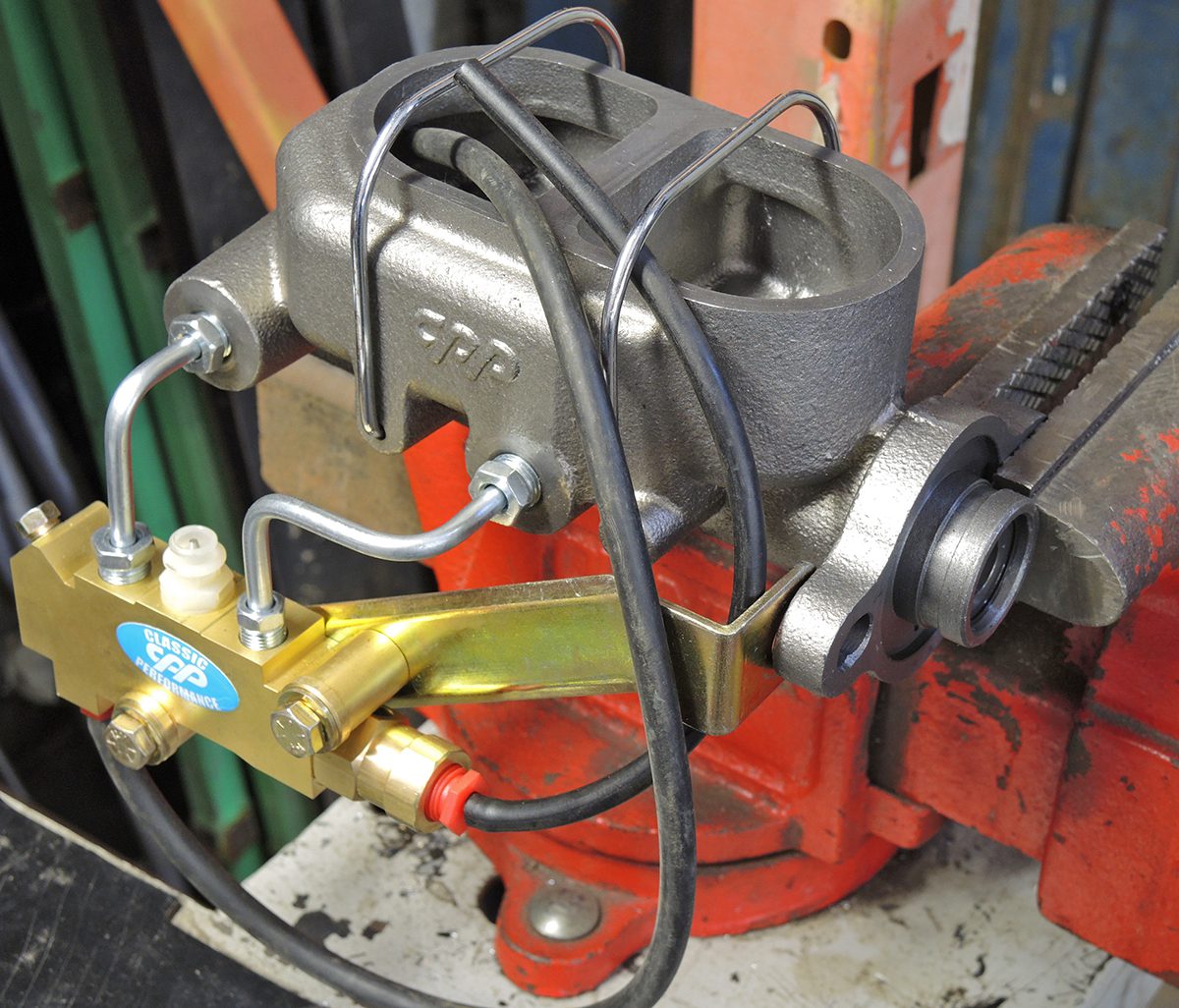
If your old classic still has a single-reservoir master cylinder, do yourself a favor and update it to a dual system. The reason is simple: safety. A single reservoir is responsible for maintaining both the front and rear brake circuits and if one circuit is compromised, the entire system is affected. A dual reservoir, such as this CPP model being bench bled, separates the front and rear circuits.
When you’re looking at master cylinders, you’ll find several common bore sizes, such as 7/8-inch, 15/16-inch or 1-inch diameters. These varying bore sizes have an effect on the pedal feel. A larger bore will create more displacement or volume but will require more pedal force, while a smaller bore will produce more pressure. A lot of factors come into play when selecting a master cylinder, from the calipers or drums being used, to vehicle weight or even seat position. One interesting factor that comes into play is pedal ratio.
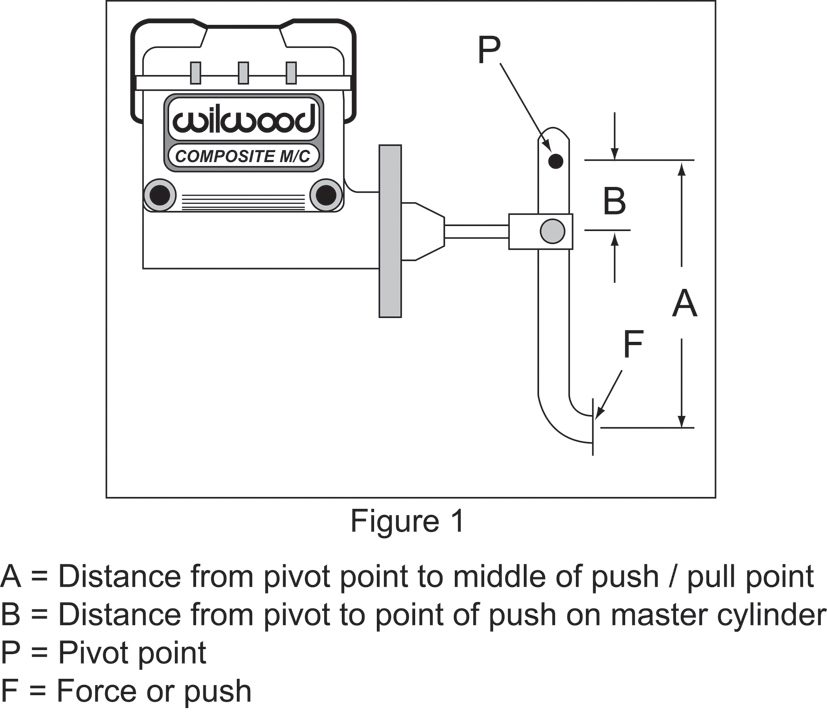
Understanding the pedal ratio will be helpful in determining if you have enough pressure acting upon the master cylinder piston or if you have the proper amount of travel required to effectively work the master cylinder.
Pedal Ratio
In most vehicle-specific, bolt-on brake system upgrade kits, you probably won’t need to worry about the brake pedal ratio. But it’s useful to understand and comes into play if you’re involved in a custom build or aftermarket pedal assembly. Pedal ratio is the distance from the pivot point of the brake lever to the middle of the pedal push point compared to the distance from the pivot point to the pushrod connection.
By varying the pedal ratio, you can adjust the brake pressure without changing the amount of pressure you’re applying by foot. The trade-off is that the amount of lever movement necessary will change. A very short pedal ratio (less pedal movement) may create a brake system with little ‘feel’ or modulation. Conversely, a softer, longer pedal may be slow reacting and take too much movement to effectively slow the vehicle. It is highly recommended to use components from a single source, since manufacturers design and engineer their products to work together.
Brake Assist
Every new vehicle built since the late-’70s is likely equipped with some form of power assist for the brakes. Just like manual steering compared to power steering, the power assist simply makes braking effort easier on the driver, as well as more controlled.
In classic cars, power assist for the brake system is available in the form of vacuum, hydraulic, or even electric action. The most common source is engine vacuum, which connects to a booster, which is a big, round, dish-like assembly that mounts behind the master cylinder. This booster uses both engine vacuum and atmospheric pressure to help move the pushrod into the master cylinder, making pedal effort much easier.
In shopping for a brake booster, consider any space restraints you may have for the diameter of the booster. Smaller boosters may fit better, but they require a stronger vacuum signal from the engine compared to their larger-diameter counterparts. A single-diaphragm booster works well with drum or disc/drum systems, but a dual diaphragm design should be considered with four-wheel-disc systems. Typically, an engine needs to be able to create a minimum of 17-inches (or more) of vacuum and will vary between 18-22-inches depending on the manufacturer and system.
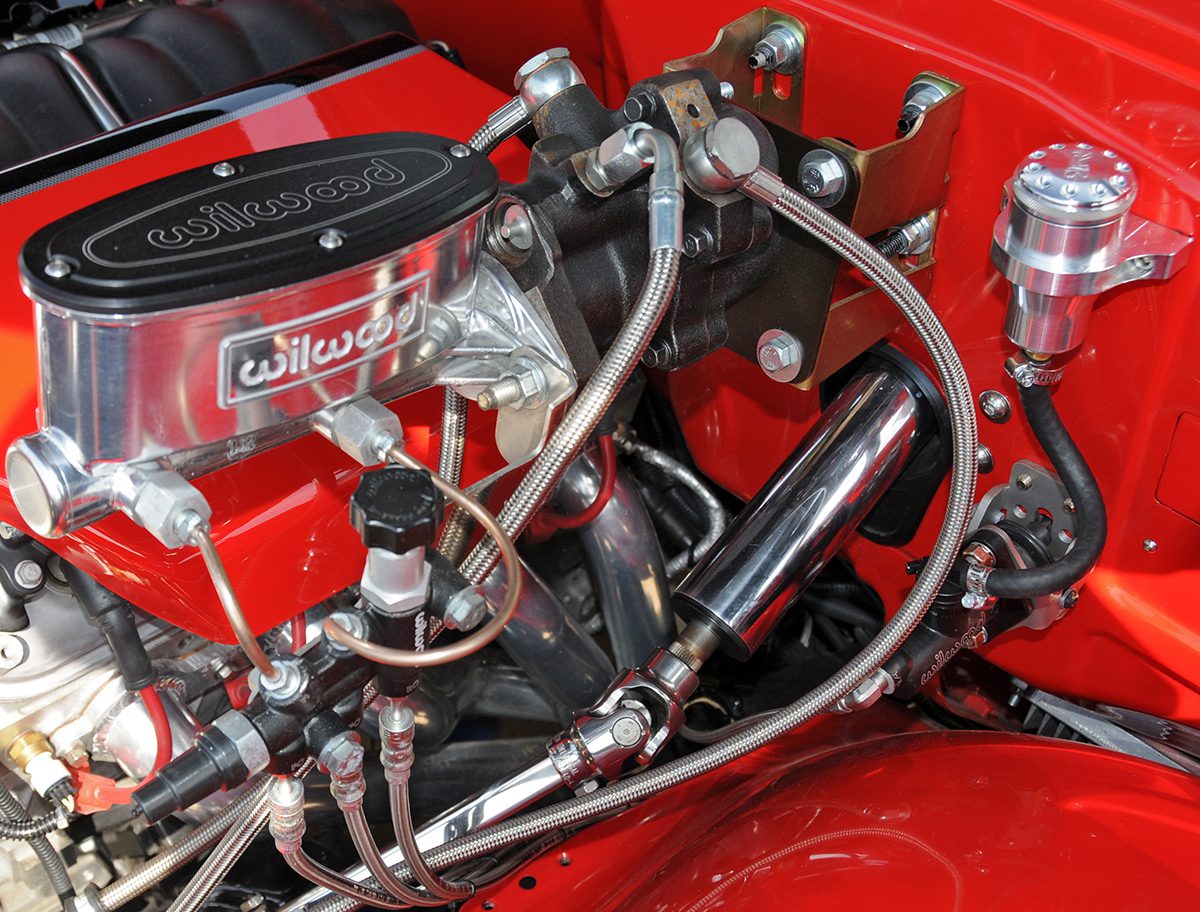
An alternative to the large vacuum booster common in most power brake systems is a hydraulic brake assist system that uses the fluid pressure from the power steering pump to aid in brake assist.
A second form of brake assist operates using hydraulic pressure. These systems were originally used on vehicles with diesel engines but have made their way into the hot rod world as an optional source for power braking assist. Hydraulic power assist is the answer for high performance engines that just don’t make a lot of vacuum, but they need to be connected to a hydraulic power steering system.
Electric power assist brakes are a rare choice for classic cars, but there are several companies that offer E-assist. These vacuum motors operate on 12-volts, are quiet and fast reacting.

Brake pads are available in a vast selection of formulas with different materials to match your driving needs, from daily drivers to high-end race compounds. It boils down to three main ingredients; organic, semi-metallic, and ceramic.
Brake Pads
Decades ago, asbestos was the number one source for brake pad materials, but we all know where that has gone. Today’s pads are made up of many different organic materials that are bonded through pressure and secured with an adhesive. There can also be a degree of metal particles included, as well as ceramic materials.
In your search for brake pads, there are three main categories that will come up: organic, semi-metallic, and ceramic. Organic pads provide adequate braking for street cars but tend to wear sooner and produce a considerable amount of dust. Semi-metallic compounds are resistant to fade and will last longer but require more hydraulic force and may produce a little more noise. The other alternative is ceramic compounds, which provide strong durability combined with resistance to fade, but they are generally more expensive as well. It all comes down to your specific application, budget, and goal for the brakes.
Brake Fluid
Like other automotive liquids and oils, brake fluid undergoes tremendous pressure and heat cycles. It must have an extremely low freezing point as well as an extreme boiling point. During those varied operating parameters, it must have a constant viscosity and maintain its compressibility.
Like engine oils, there are several different grades of brake fluid to choose from to match your goals and driving conditions. The most common fluids are specified by the Department of Transportation – DOT3, DOT4 and DOT5. DOT3 is the base fluid, but for higher performance applications, DOT 4 is the better choice. DOT5 is a silicone-based fluid which, while not designed for high performance driving, is a favorite of hot rodders since it won’t remove paint if it gets spilled or splashed on a surface (DOT 3 and 4 are highly corrosive to paints and coatings). To confuse things, a DOT 5.1 is available, and it IS compatible with DOT 3 and 4 fluids. It also has a higher boiling point and is compatible in ABS systems.
We break down the different brake fluid grades and proper brake system bleeding techniques in this tech article HERE.
 StopTech
StopTech
Trophy Brakes
When you’re ready to improve the stopping capabilities of your ride, take a look at the Trophy Big Brake Kit series from StopTech. They cover many applications with complete systems based on their big rotors teamed with their updated STR 40 or 60 calipers.
The STR calipers have increased weight savings over their predecessors, along with improved cycle fatigue characteristics. Both caliper options are engineered to work modern ABS/traction control systems and look as good as they stop thanks to a durable nickel finish. Kits are offered for front or front/rear upgrades, resulting in improved consistency, fade resistance, and responsiveness.
 Summit Racing Equipment
Summit Racing Equipment
Rear Disc Kits
If your GM, Ford, or Mopar is already equipped with factory discs up front but stuck with drums in the rear, Summit Racing is here to help. Their Rear Drum-to-Disc Brake Conversion Kits take the guesswork out of the swap and come with everything you’ll need to dump the drums for a much more efficient disc system.
Summit includes solid or drilled/slotted rotors with a pair of new GM-single piston calipers including the pads. Heavy duty mounting brackets are included along with brake hoses, hardware, and parking brake cables. Kits are available for these rear axles: Chevy 10- and 12-bolt, Mopar 8.75-inch, Dana 60, and Ford 8- and 9-inch housings.
 Wilwood
Wilwood
Fluid Movement
Every brake system needs brake fluid, but every brake fluid isn’t for every brake system. In other words, don’t settle for a chain store brake fluid in your hot rod. Wilwood understands the expectations and requirements of a performance braking system, which is why they recently developed their new DOT 5.1 Hi-Temp 570 Brake Fluid.
This new, lower-viscosity fluid was specifically formulated to allow modern ABS and brake-based limited-slip systems to react faster. For applications without ABS, this lower viscosity makes flushing and bleeding the brakes more efficient. The DOT 5.1 rated formula has a 570-degree fahrenheit dry boiling point and is extremely resistant to aeration and foaming to provide improved pedal feel lap after lap. Available in single, six- or 24-packs.
 Baer
Baer
Claw Marks
The system that really put Baer brakes on the market, a two-piston pad-guided caliper with the original Baer claw logo, is back! The Classic Series brake upgrade is available as a direct bolt-in kit for early GM, Ford and Mopar applications for the front and rear at a great price with the quality you expect from Baer.
The front Classic kits are available with 11- or 13-inch slotted and drilled rotors complemented with premium races, bearings, seals, and dust caps. Precision mounting brackets for each application are included, along with hardware and stainless braided hoses. The new calipers are finished in a durable red powdercoat with the classic claw logo in black and feature D412 pads. A rear system is also available based on a 10.5-inch rotor with a parking brake built into the caliper.
 Classic Performance Parts (CPP)
Classic Performance Parts (CPP)
Steering Assist for Brakes
Running a big cam that makes zero vacuum, or simply don’t like the looks of a brake booster hanging off the firewall? Classic Performance Parts has a solution so you can still get power assist to your brakes with their Hydrastop hydraulic brake assist system.
The Hydrastop uses the power steering system to create hydraulic assist rather than engine vacuum assist. This theory has been used for many years on passenger vehicles equipped with diesel engines and CPP has developed a line of bolt-in kits for classic Chevy applications. A Show Stopper kit includes the hydraulic assist unit with a billet aluminum firewall mounting bracket, a chrome master cylinder with an adjustable proportioning valve distribution block, chrome accumulator cover, stainless pressure hoses, rubber return hoses, and the necessary fittings for installation.
 Johnson’s Hot Rod Shop
Johnson’s Hot Rod Shop
Modern Kinmonts
If traditional hot rods are your thing, you’ll want to take a close look at the Kinmont Safety Stop brake system from Johnson’s Hot Rod Shop. The JHRS team set out to combine the looks of the rare and sought-after original Kinmont brake system with the stopping power of modern disc brake technology. The result is a system that looks hot rod legit, is easier to install, and functions much better.
Johnson’s based their front system around the ’37-’41 Ford round-back spindle and uses a 10.5-inch vented rotor with a Wilwood four-piston caliper while the rear drum system is designed for use with a 9-inch Ford or quick-change rearend. There are scoops in the covers, arched fins line the perimeter of the backing plate, and even dummy wheel cylinders with brass nuts and wave washers are in place to mimic the adjusting points on the originals. The brakes accept a 15-inch wheel with no spacer and are available in three applications: 5×4.5/4.75, 5×5/5.5, and a pin drive knock-off wheel in 5×5/5×5.5.
 Speedway Motors
Speedway Motors
Frame Mounted Assist
Updating the brakes should be one of the first modifications to nearly any street rod. To assist in updating early street rods with floor-mounted pedals, Speedway Motors offers a Universal Power Brake upgrade kit consisting of a master cylinder, vacuum booster, and pedal assembly. The kit mounts inside the frame rail or boxing plate and is supplied with a 2-inch bracket.
This assembly comes with everything you need to convert to a power-assisted brake system, including a new dual-reservoir master cylinder. The kit features a Corvette-style master cylinder with a 1-inch bore and a single-diaphragm booster is installed inline to provide braking assist through the 10.5-inch brake pedal. The sturdy pedal is designed with a 6:1 pedal ratio to provide comfortable pedal effort.
 Pro-System/Alcon
Pro-System/Alcon
Custom Systems
When you’re getting serious about high performance on the track and are looking for a custom system for your specific application, Pro-System is ready to work with you. With over 25 years of experience with top-level North American motorsports teams in NASCAR, Indy, Vintage Racing, and IMSA, they provide a wealth of knowledge combined with a well-equipped development facility and partnership with Alcon.
Pro-System can develop, test, and manufacture a brake system to exceed your goals no matter what the application. They can custom make almost any size rotor, hat or bracket you may need and enjoy the challenge of devising innovative and unusual solutions.
 Classic Tube
Classic Tube
Flaring Fun
If you’re planning to plumb a custom brake line system on your project, do yourself a favor and invest in a professional flaring tool. Classic Tube offers a Universal Hydraulic Flaring Tool kit that will help you produce consistent single- and double-inverted 45-degree flares on 3/16- and ¼-inch stainless steel tubing and larger for other applications.
This Tool Kit can also be used for fuel lines, trans lines, or other applications with dies for push lock flares, GM fuel line O-ring flares, and metric bubble flares. They also offer dies to produce 37-degree AN-style flares. If you ever doubt your fabrication skills, Classic Tube can easily reverse engineer any type of hydraulic line and carries a large inventory of replacement lines for vehicles from the ’30s to the present.
 Master Power Brakes
Master Power Brakes
Beautifying Boosters
Power assist brakes are certainly nice to have when you’re behind the wheel, but there is just nothing good looking about a vacuum brake booster under the hood. Master Power Brakes has dealt with this underhood wart for years and finally took matters into their own hands and developed a great-looking carbon fiber booster called the Carbon X.
The Carbon X brake booster consists of high-gloss carbon fiber shells retaining the internals of a modern 9-inch, dual-diaphragm system. All of this is held together with several CNC-machined billet aluminum components including the two outer billet aluminum rings. These rings come in black anodized, polished, or brushed finishes, plus MPB offers a few custom upgrades to match your engine compartment.
 Hurst
Hurst
Hold It!
Planning on entering one of our burnout competitions during an event this year? Here’s a little tip to help you get prepared: install a Line-Lock! A Line-Lock, or Roll Control solenoid installs on the front brake circuit, allowing you to lock the front wheels to hold the vehicle secure as you lay into the gas to smoke the rear hides!
Hurst offers a Roll/Control Kit that is based on a heavy-duty solenoid housed in a stainless steel valve assembly for great looks and resistance against corrosion. The assembly is easy to mount and even has a 150-micron filter to keep out any contaminants. There is also an extra threaded port for a pressure gauge or for a bleeder screw, and Hurst even supplies an activation switch, LED, and fuse assembly for protection.


 StopTech
StopTech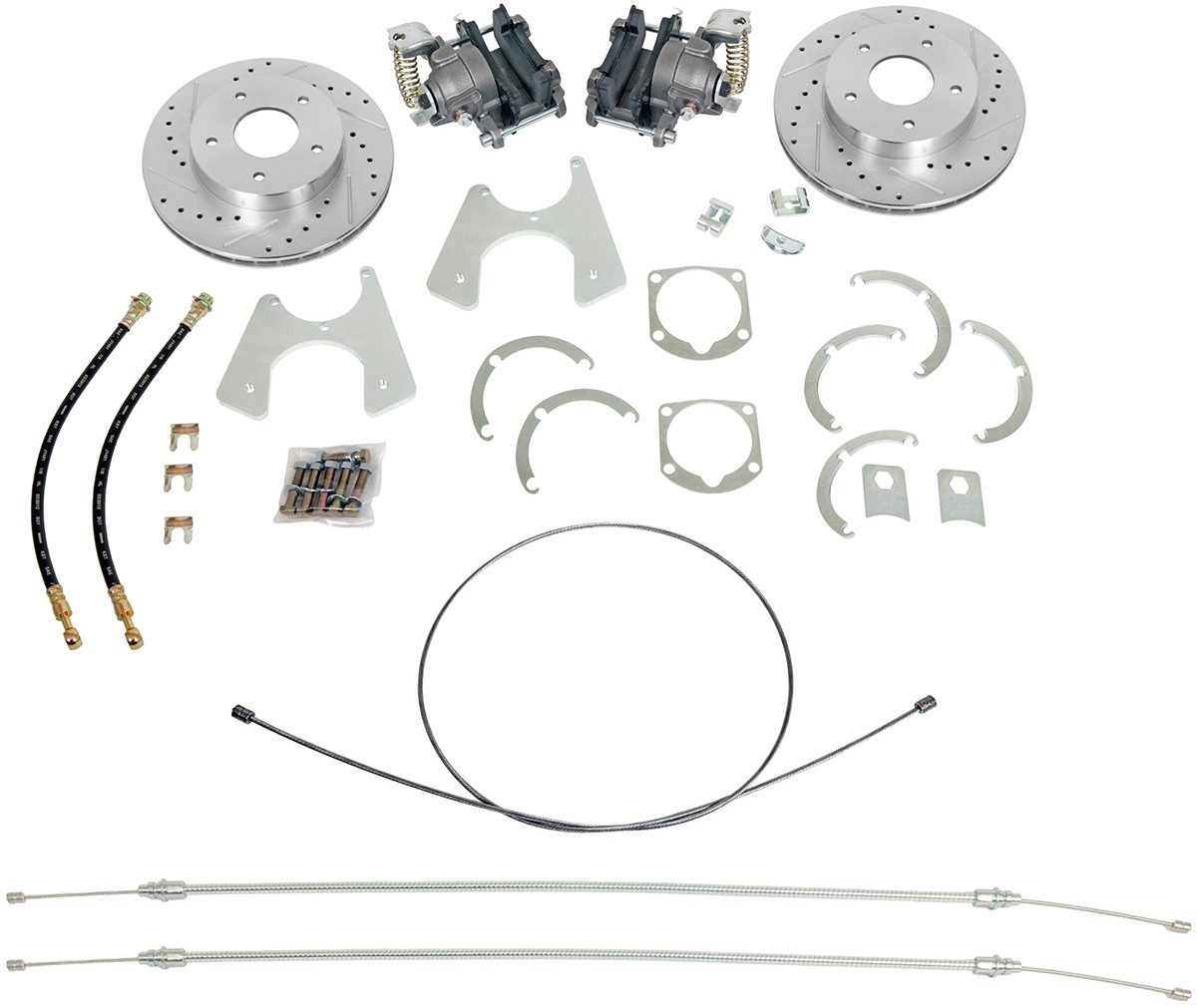 Summit Racing Equipment
Summit Racing Equipment Wilwood
Wilwood Baer
Baer Classic Performance Parts (CPP)
Classic Performance Parts (CPP)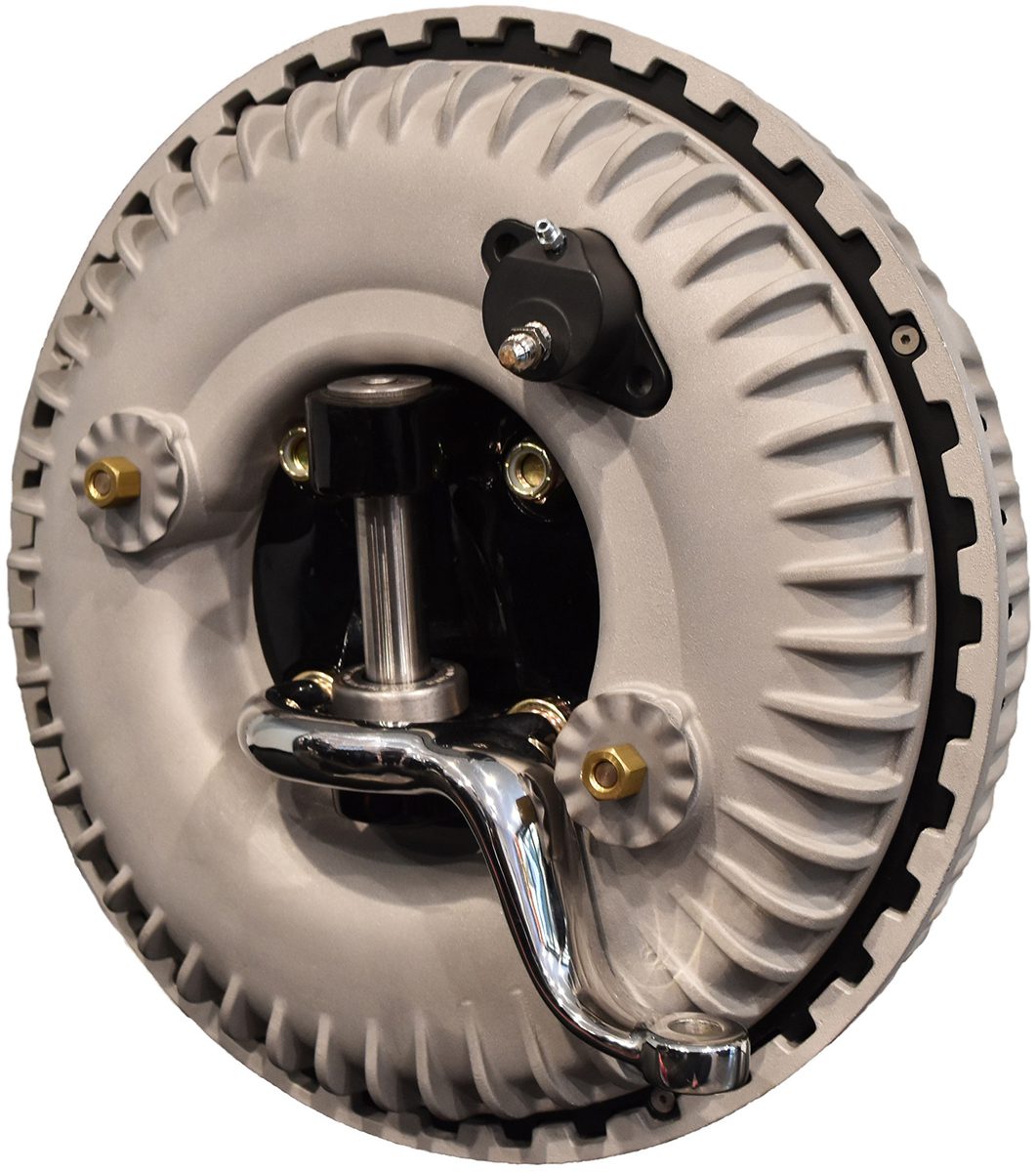 Johnson’s Hot Rod Shop
Johnson’s Hot Rod Shop Speedway Motors
Speedway Motors Pro-System/Alcon
Pro-System/Alcon Classic Tube
Classic Tube Master Power Brakes
Master Power Brakes Hurst
Hurst


